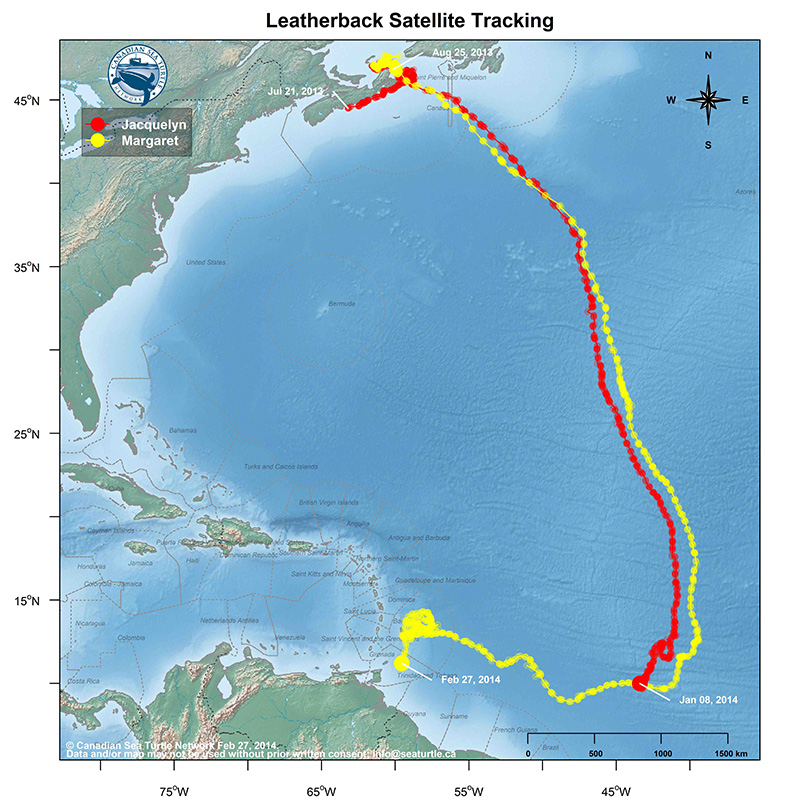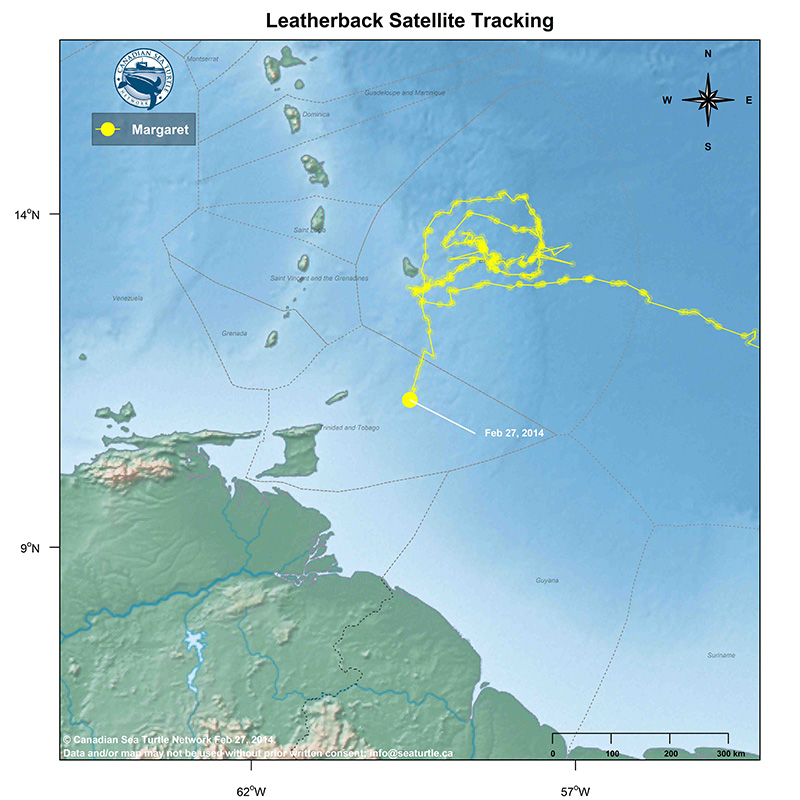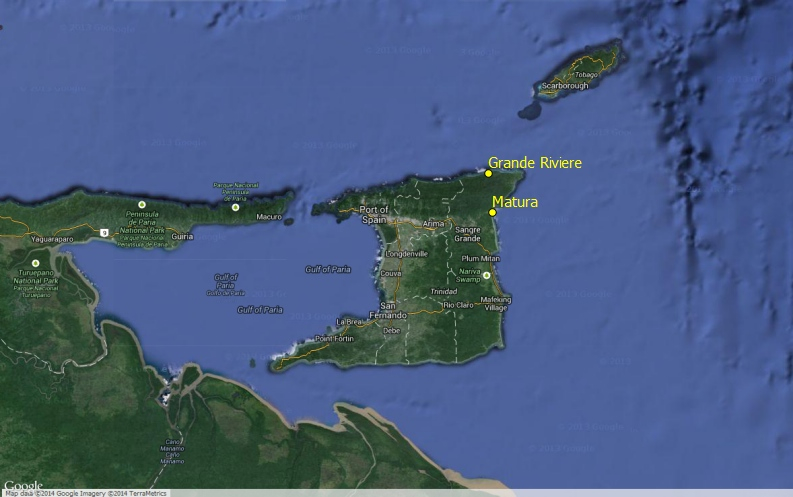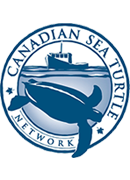
Today there is good news and not-so-good news about Margaret.
The good news is that she is making a beeline for the nesting beaches of Trinidad. Check out this map.

She left coastal Barbados three days ago, and look at how close she is to Trinidad already! The nesting season has already started there, although peak season is still about two months away.

In the Atlantic, mature female leatherback turtles do not nest every year. They nest every two or three years. During their nesting years, they will generally lay around eight nests, about 10 days apart. In 2011, Margaret was recorded nesting both at Matura and Grande Riviere beaches in Trinidad. We’ve contacted our colleagues who work on those beaches, and we will continue to keep them posted about Margaret’s location. We hope that they will find her when she nests and remove her valuable transmitter so we can deploy it on another leatherback in Canada.
The not-so-good news is that the quality of the locations we’ve received from Margaret’s transmitter over the past few days has not been good. I yelled “No!” out loud this morning when Devan, our turtle technician, told me that the last series of locations were “B” class. B-class locations are the poorest quality, and generally indicate that only two tag transmissions were received by the satellite to calculate the turtle’s position. The more transmissions the satellite receives, the better its estimate of the turtle’s location.
A long series of B location estimates—especially over several days—can mean the turtle is spending very little time at the surface of the water. It can also mean that the tag is running low on battery power or has started to “biofoul.” Biofouling is when organisms like algae and barnacles colonize on the tag. This can negatively impact the tag’s performance.
This may mean that we will lose transmissions from Margaret’s transmitter altogether—even before she makes it to the nesting beach. (You may remember this is what happened with Jacquelyn.) It doesn’t mean, however, that someone won’t find Margaret on the beach anyway. Last year, dedicated beach workers in Colombia found our turtle Red Rockette after her transmitter had stopped working. It’s just a lot harder to do.
I hate when this happens just when the animals are so close to nesting! But at least we know where Margaret is heading. Stay tuned…

